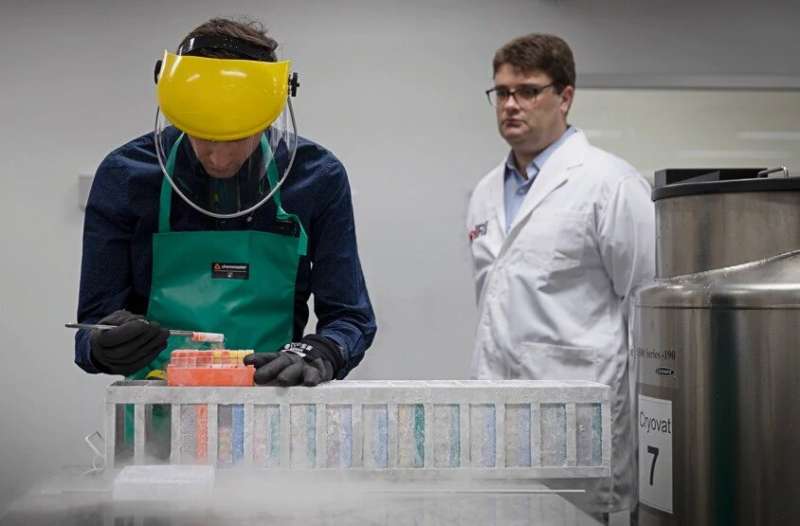Largest human heart bank advances understanding of heart failure

Australian researchers have made several new heart failure discoveries in an innovative world-first project examining cryo-preserved human hearts, procured after transplantation, in the Sydney Heart Bank.
Scientists at the University of Sydney's Charles Perkins Centre and the Heart Research Institute studied the molecules in hearts removed at the time of transplantation, revealing what happens inside them when they stop working.
"What's really intriguing is that we were able to use human hearts donated over many years and curated in the Sydney Heart Bank, the world's largest human heart bank based at the Charles Perkins Centre," says Associate Professor John O'Sullivan, Cardiologist and Cardiometabolic Disease Group leader at the Heart Research Institute and Charles Perkins Centre.
"Using this unique resource, we determined how the heart deals with injury and clotting, and how heart failure differs between men and women."
"Each of these discoveries pave the way for exciting new therapies that could treat, or even better, prevent heart failure in Australians," he says.
The work is published in Nature Communications.
Improving understanding of heart failure
Heart failure is where the heart is unable to pump blood around the body.
The two most common types of heart failure requiring heart transplantation are that caused by a heart attack, and that resulting from an enlarged and weakened heart. Over half a million Australians have heart failure, with 61,000 new cases diagnosed each year, costing $2.7 billion per annum.
Progress in understanding the molecular underpinnings of heart failure has been hampered by lack of access to human heart tissue.
The research team used the Sydney Heart Bank, located at the Charles Perkins Centre and directed by colleague Dr. Sean Lal, Clinical Academic Cardiologist at the University of Sydney and Royal Prince Alfred Hospital, to study 44 failing hearts that have been removed during transplantation at St Vincent's Hospital over the past 30 years.
"We used advanced techniques to screen this heart tissue and measure thousands of proteins and other small molecules," explains Associate Professor O'Sullivan, joint senior author on the paper with Dr. Lal.
"We then compared hearts with advanced heart failure with tissue from non-diseased hearts, matched for age, gender, and BMI, for a deep understanding of how they differ."
Researchers found changes in many important processes in the heart, including mechanisms that generate energy for the heart, mechanisms that deal with injury, clotting mechanisms, and processes that maintain structural integrity.
"We identified changes that were common and unique to both types of heart failure, and importantly, found differences between male and female heart-failure hearts," A/Prof O'Sullivan says.
The team will follow up many of their discoveries in the hope of finding new treatments, for example, turning certain enzymes back on that would give the heart more energy and thereby work better.
The Sydney Heart Bank
Following the project's success, Dr. Lal explains how the Sydney Heart Bank, housed at the state-of-the-art biobanking facility at the Charles Perkins Centre, could benefit other researchers.
"Our vision is to create a virtual biobank that details gene, protein and enzyme expression in diseased and non-diseased human hearts that can be made available to Australian and international researchers," Dr. Lal says.
Commencing in 1989, the Sydney Heart Bank now houses over 17,000 heart tissue samples facilitated through collaborations with St Vincent's Hospital (Sydney), the Australian Red Cross Donor Service and Royal Prince Alfred Hospital.
The paper is titled "Core Functional Nodes and Sex-Specific Pathways in Human Ischaemic and Dilated Cardiomyopathy."
More information: Mengbo Li et al. Core functional nodes and sex-specific pathways in human ischaemic and dilated cardiomyopathy, Nature Communications (2020). DOI: 10.1038/s41467-020-16584-z



















